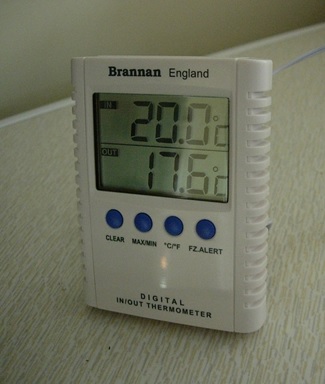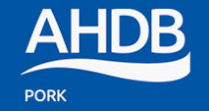High Temperature

What To Look For:
Avoid temperatures at the high end of or exceeding the DEFRA recommendations (measure and record at close to pig height inside pens)
Signs of high temperature include:
- pigs being unsettled (looking for a cool lying area away from the body heat of other pigs)
- pigs lying far apart,
- pigs lying (by choice) in the dunging area or under the drinkers,
- pigs being very dirty (from lying in the dunging area or dunging in the lying area);
- pigs dunging on the solid lying area (in order to lie on cooler slatted area).
- Increased water consumption & wastage.
- Panting,
- Skin discolouration.
Regular recording of temperature (max & min) in the pens at pig-height as well as tail biting records can help show if this is a likely risk on the unit.
Additional information:
Avoid temperatures at the high end of or exceeding the Defra recommendations (a temperature range for pork-weight pigs (~55kg) of 15 - 21°C, and for bacon weight pigs (~100kg) 13 - 18°C). Measure and record at close to pig height inside pens).
Signs of high temperature include:
- Pigs being unsettled (looking for a cool lying area away from the body heat of other pigs)
- Pigs lying far apart
- Pigs lying (by choice) in the dunging area or under the drinkers
- Pigs being very dirty (from lying in the dunging area or dunging in the lying area)
- Pigs dunging on the solid lying area (in order to lie on cooler slatted area).
- Increased water consumption & wastage
- Panting
- Skin discolouration
In artificially ventilated systems, high temperatures are likely to combine with high humidity, making the environment uncomfortable for the pigs. High temperature and high humidity together are more hazardous than when they occur separately. In slatted systems, pigs have limited opportunities to cool down when the environment is hot, so require more careful building management such as ventilation.
Suggestions:
Regular recording of temperature (max and min) in the pens at pig-height, as well as tail-biting records can help to show if this is a likely risk on the unit. If seasonal tail biting is a known problem on the unit, ensure successful changes are included in management documents and calendar to reduce the impact as much as possible.
Painting the outside of the structure white can reduce heat absorbed by building and keep internal temperature lower (proven in outdoor sow arcs).
Additional material:
Defra code of recommendation for pigs - https://www.gov.uk/government/uploads/system/uploads/attachment_data/file/69369/pb7950-pig-code-030228.pdf
Action for productivity 21. Ventilation http://pork.ahdb.org.uk/media/2048/Action-21-Ventilation.pdf
AHDB Pork Ventilation Guide http://pork.ahdb.org.uk/environment-buildings/pig-buildings-housing-development/ventilation/ventilating-pig-buildings-guide/
Action for productivity 3: Heat Stress (Indoor) –
http://pork.ahdb.org.uk/media/2044/Action-3-Heat-stress-indoors.pdf
Farm case Study - outdoor sows (ideas still relevant to indoor housing)
http://pork.ahdb.org.uk/media/2037/RIA-10-Seasonality-in-pigs.pdf
